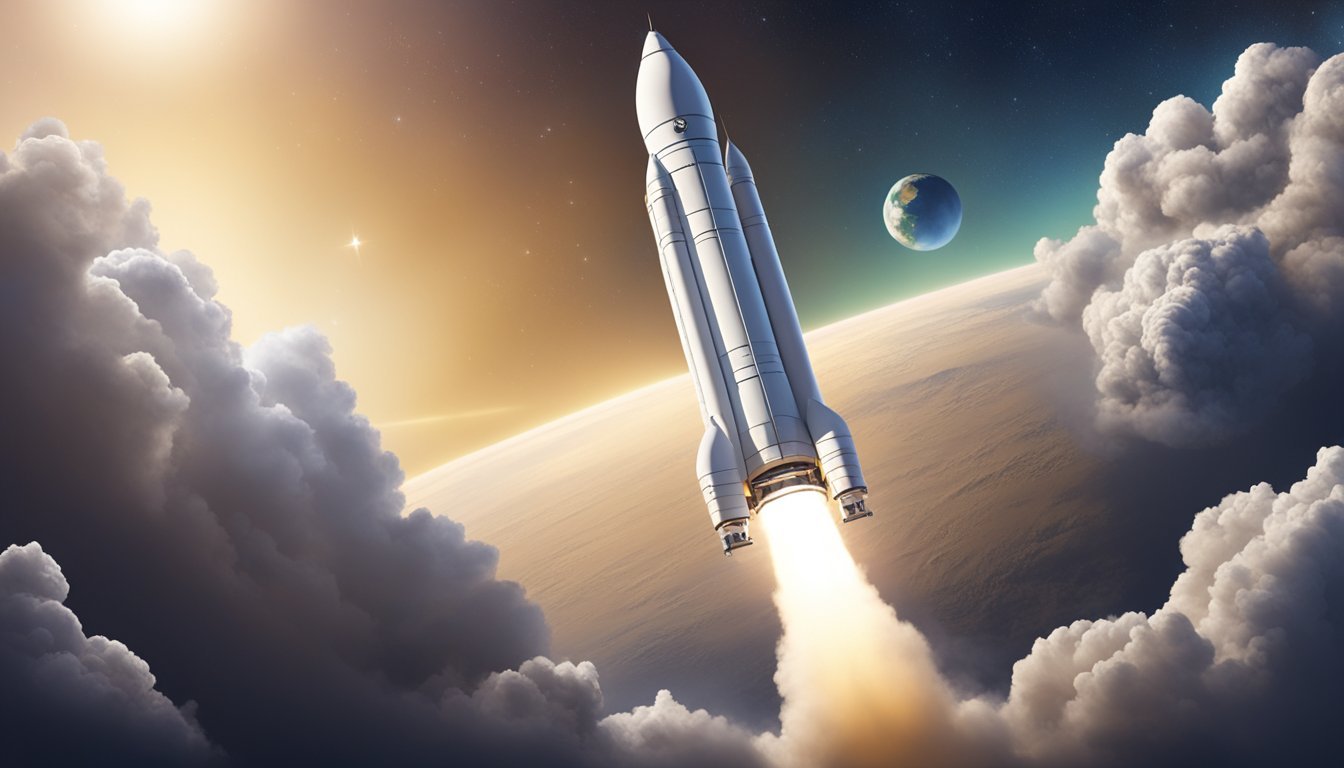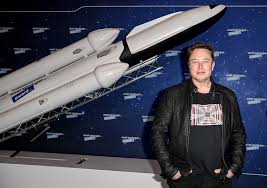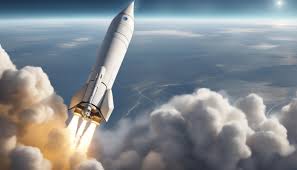Elon Musk’s Reusable Rocket Revolution: Space Tourism’s Wild New Frontier!

Elon Musk’s Reusable Rocket Revolution: Space Tourism’s Wild New Frontier!
Introduction: Elon Musk’s SpaceX has been at the forefront of the space industry for years, revolutionizing space travel with its reusable rocket technology. One of Musk’s boldest visions is to make space tourism a reality, allowing ordinary people—beyond astronauts and elite scientists—the chance to travel to space. With the development of reusable rockets, SpaceX has drastically reduced the costs of space launches, making the once-unimaginable idea of space tourism more attainable than ever before. The success of SpaceX’s Falcon 9 and the potential of future technologies like Starship have opened up the possibility for a thrilling new frontier in tourism, one that could bring human space travel into the mainstream. In this article, we explore Musk’s reusable rocket revolution and its significant impact on the emerging space tourism industry.
The Reusable Rocket Breakthrough: SpaceX’s introduction of reusable rocket technology has been a game-changer for the space industry. Prior to SpaceX’s breakthroughs, rockets were used only once before being discarded, making space travel prohibitively expensive. However, Musk’s ambitious goal of lowering the cost of space travel led to the development of the Falcon 9, the first orbital class rocket designed for reuse. With the successful landing of the Falcon 9’s first stage booster after launch and re-flight, SpaceX proved that rockets could be reused multiple times without significant degradation in performance.
This breakthrough drastically reduced the cost of launching payloads into space, opening the door to more frequent space missions. By reducing the price of space launches, Musk has made it economically viable for a new market: space tourism. The reusable rockets also offer a more sustainable approach to space exploration, as the technology ensures fewer waste products and the potential for faster, more affordable access to space.
SpaceX’s development of Starship, a fully reusable spacecraft designed to carry passengers and cargo, further strengthens the idea of space tourism. Once operational, Starship will be capable of carrying up to 100 passengers on interplanetary missions, including trips to the Moon and Mars, making space travel not just a possibility for astronauts, but a reality for ordinary people eager for the adventure of a lifetime.
Space Tourism’s Growing Popularity: With the success of reusable rocket technology, space tourism is transitioning from a science fiction dream to a tangible reality. For decades, space travel was confined to highly trained astronauts and specialized scientific missions, but the growing interest in space tourism has shown that people are eager to experience the wonder of space firsthand. SpaceX’s advancements, coupled with the broader development of commercial space travel, have positioned Musk and his company as key players in the emerging space tourism market.
Several space tourism companies, including Blue Origin (founded by Amazon’s Jeff Bezos) and Richard Branson’s Virgin Galactic, have already completed successful suborbital flights with private citizens onboard. These flights offer a short but breathtaking experience in space, allowing passengers to experience weightlessness and see Earth from the edge of space. However, SpaceX’s reusable rockets, particularly Starship, aim to take the space tourism experience to the next level, offering longer-duration flights and more expansive missions.
Musk’s vision extends beyond suborbital flights, aiming for orbital flights and even lunar missions, where tourists could circle the Moon in a SpaceX spacecraft. Such missions would allow passengers to experience space travel in its fullest form, with views of distant planets and a journey that pushes the boundaries of human exploration. This new frontier of space tourism is poised to attract not only wealthy individuals but also those eager to be a part of humanity’s next big leap into the cosmos.
The Impact on the Space Industry and Society: Musk’s reusable rocket revolution is not only reshaping space tourism but also has significant implications for the entire space industry and society at large. By reducing the cost of access to space, SpaceX has made it possible for space missions to be more frequent and affordable, enabling a new wave of space exploration. This includes the potential for scientific research, satellite deployment, and even commercial ventures like asteroid mining.
The growth of space tourism could also stimulate new industries and job opportunities. As more companies enter the market and demand for space travel increases, there will be a need for training programs, specialized workforce development, and support industries to cater to this rapidly growing field. For the first time in history, ordinary people could have the chance to participate in space exploration, paving the way for a more inclusive space future where humans are not confined to Earth.
On a cultural level, space tourism has the potential to inspire a new generation of explorers, scientists, and engineers. As space travel becomes more accessible, it could ignite an interest in STEM fields and lead to greater global collaboration in space exploration. The sight of everyday people becoming space tourists could also alter society’s perception of space as a frontier, turning it from something distant and inaccessible into an exciting realm of possibility.
Challenges and the Road Ahead: While the potential of space tourism is immense, there are still significant challenges ahead. The cost of a ticket for a SpaceX mission, for example, is still prohibitively high for most people. Though Musk has stated that the price will come down as technology improves and space travel becomes more routine, the high cost remains a barrier to mass adoption of space tourism. Additionally, the development of infrastructure to support space tourism, such as launch pads, spaceports, and travel safety protocols, will require substantial investment and time to develop.
Furthermore, there are logistical challenges involved in making space tourism safe, comfortable, and accessible for a broad range of individuals. SpaceX will need to ensure that passengers with varying levels of physical health can travel comfortably, and that the environmental impact of increased space travel is considered. The company will also need to continue refining its technology to ensure the highest level of safety during flights, especially as the number of tourists and the frequency of launches increase.
Conclusion: Elon Musk’s reusable rocket revolution is not just about advancing space exploration; it’s about making the once-impossible dream of space tourism a reality. By dramatically reducing the cost of space travel and improving the efficiency and reusability of rockets, Musk and SpaceX have opened up an entirely new frontier for human exploration. Space tourism is set to become the next big industry, with people eager to embark on trips to the stars and experience the wonder of space firsthand.
While challenges remain in terms of affordability, safety, and infrastructure, Musk’s vision of an accessible, multi-planetary future is becoming increasingly plausible. As technology advances and the market for space tourism continues to grow, it’s only a matter of time before space becomes the ultimate adventure destination. The wild new frontier of space tourism is within our reach, and thanks to Musk’s relentless pursuit of innovation, the sky is no longer the limit.








